What is a Document Management System?
Updated 30th January 2025 | 16 min read Published 21st July 2023

Document management (DM), is the use of a computer system and software, often referred to as a Document Management System (DMS), to store, manage and track electronic documents. Documents may be in native digital formats, or converted from paper through the use of a digital document scanner.
A document management system controls and organizes documents throughout an organization. It incorporates document and content capture, collaboration, versioning, workflow, document repositories, information retrieval systems, and the processes used to track, store and control documents.
In popular terminology, implementing a DMS is referred to as “going digital”, or “going paperless”.
Glossary of document management terms
This glossary contains definitions of many common terms and acronyms used in document management, as they relate to accounting firm operations.
Access Management
Access management (AM) is the process of identifying, tracking, controlling and managing authorized or specified users’ access to a system or data source. Access management tools allow system administrators to identify users and groups, and assign access rights.
Access Rights/Permissions
Rights or permissions can be set for access to specific departments, clients, documents, status, and actions. (View/read only vs. full access).
AFR (Advanced Forms Recognition)
Doc.It Advanced Forms Recognition (AFR) identifies and automatically names and files documents into the correct folder. Tax forms, income, expense and interest forms, invoices and financial reports are just a few examples. With AFR, documents are identified quickly, named consistently, and filed accurately. In Doc.It Suite, AFR recognizes hundreds of different document types as they are moved from the scanner into Doc.It, ensuring that each document is saved in accordance with the proper naming conventions.
Archiving
Data archiving is the process of moving data that is no longer actively used to a separate storage status for long-term retention. Doc.It applies your retention policy based on document type and alerts the firm to purge stored documents when they reach their expiration date. Archive data consists of older data that remains important to the organization or must be retained for future reference or regulatory compliance reasons. In Doc.It Suite, functional security allows one to specify access and modification rights to ensure files are not changed, moved or deleted once filed in the Doc.It Archive.
Audit Trail
DMS software tracks tracks information about each document. This information includes client name, document name, date created, changes to the content, and edits to the indexing structure.These activities are logged in a database commonly referred to as an audit trail or audit log. This helps track user activity, and prevent unauthorized access or activity.
Annotations
Just like the productivity tools you would use with paper documents, a DMS provides the same functionality with the ability to mark up records with sticky notes, highlights, redactions, and more. In Doc.It PDF Editor, several features allow accountants to run calculations, save a ‘tape’, and add notes to client documents and forms. Annotations are a layer to the document and do not impact the integrity of the original file.
Binders
In Doc.It, also referred to as ‘Work Binders’: Work binders are digital folder structures that allow Doc.It users to group related documents together in a container specific to an engagement or project. In addition to organizing client files, user access to documents can be controlled at the binder-level.
Capture
Document capture refers to the process of converting a paper document into a digital document and/or extracting data from a form. This allows quick access to information immediately, and improves accessibility to information by team members. This also greatly simplifies document storage. Electronic documents can also be captured and added into a document repository. Also see Scanning.
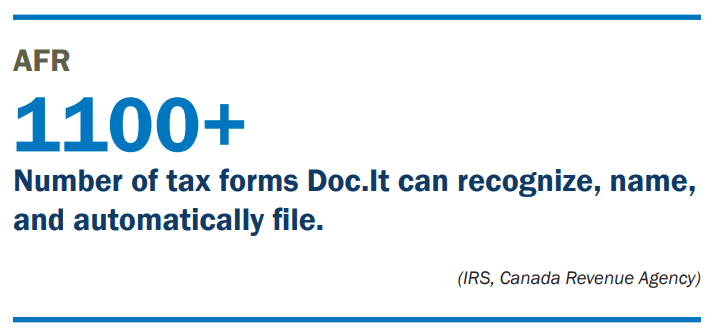
Check in/Check out
Like checking out a book from a public library, specific documents can be ‘locked’ to allow changes by only a single user at a time. The latest version will always be the published version of a document. While a document is checked out by a user, other users will be able to view but not edit the document. This prevents multiple people from making conflicting changes to one document at the same time.
Cloud
Cloud computing is the on-demand availability of computer system resources, especially data storage and computing power, without direct active management by the user.
Cloud, Hybrid
Hybrid cloud is a cloud computing environment that uses a mix of on-premises, private cloud and third-party, public cloud services with orchestration between the two platforms.
Cloud, Private
While public clouds deliver services to multiple organizations, a private cloud is dedicated to the needs and goals of a single organization.
Cloud, Public
A public cloud is one in which a service provider makes resources, such as virtual machines, applications or storage, available to the general public over the internet.
Collaboration
Collaboration is a working practice in which employees work together to a common purpose to achieve business benefit. Collaboration exists in two forms;
- Synchronous, where everyone interacts in real time, as in online meetings, through instant messaging, or via Slack, Skype, Teams, or similar applications;
- Asynchronous, where team members can collaborate by sharing information and work on an as-needed basis, as when uploading documents or annotations to shared workspaces.
A key benefit of document management systems is simplifying team collaboration, in that they provide structure, storage, and search capability that allow teams to view and work on documents, track tasks and project deadlines without the burden of paper file handling or project tracking tools.
Configuration
Configuration is the set-up process of a document management system which involves decision-making and design to address the specific needs of your business. These may include configuration to fit in the firm’s network environment, addressing security and access, workflows in MS Office, email, tax applications, and other software.
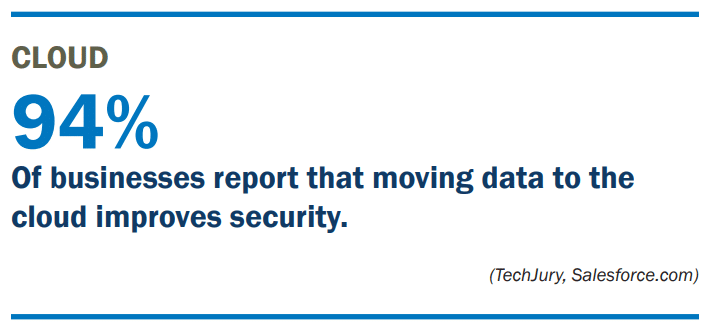
Digital Signature
Based on encryption technology, a digital signature is a mathematical technique used to validate the authenticity and integrity of a message, software or digital document. A digital signature guarantees that an electronic document is authentic. Digital signature encryption secures the data associated with a signed document and helps verify the authenticity of a signed record. Used alone, it cannot capture a person’s intent to sign a document or be legally bound to an agreement or contract. See eSignature
Disaster Recovery
An area of security planning that aims to protect an organization from the effects of significant negative events (a “disaster” is defined as any event that disrupts business – natural or man-made). DR planning allows an organization to maintain or quickly resume mission-critical functions following such an event. For instance, having a plan to continue operations remotely by virtue of data backup and voice over IP business phone systems while access to a company’s office is restricted.
Document Imaging
The process of scanning paper documents to an electronic format. See OCR.
Drag and Drop
The ability to move an electronic document easily from one part to another part of the screen using a mouse or similar device. No need to go through the “Save As”, drill down through folders, or rename documents. In a well-designed DMS, drag and drop functionality saves significant time.
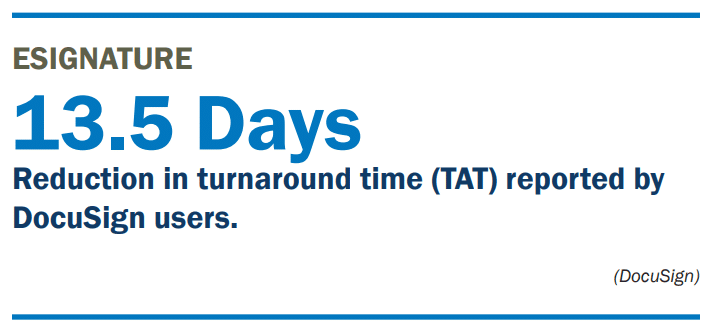
eSignature / Electronic Signature
An electronic signature is technology that enables a user to digitally apply a legal binding signature to a document. According to the U.S Electronic Signatures in Global and National Commerce Act, an eSignature is an “electronic sound, symbol, or process attached to, or associated with, a contract or other record and adopted by a person with the intent to sign a record.”
A number of companies provide eSignature software; the leading eSignature application, DocuSign, integrates seamlessly with Doc. It, allowing accountants to collect client signatures without the time and cost of paper distribution.
Encryption
Data encryption translates data into another form, or code, so that only people with access to a secret key (a decryption key) or password can read it. Accountants are trusted to keep clients’ critical business, financial and personal information secure. Sending and receiving tax documents using unsecured,
unencrypted email makes them an easy target for hackers. In modern DMS systems, a client portal site securely encrypts data and controls access, so that the accountant and the client you authorize are the only parties with access to sensitive data.
ECM (Enterprise Content Management)
A content management system, or CMS, creates and manages different kinds of digital content, besides more traditional documents. Rather than solely managing PDFs, Excel files, or Word files, CMS systems focus on management of web pages, images, flash files, and records. The main purposes of a CMS are the storage, retrieval, and publishing of content. CMS systems are common in web content, entertainment and media industries, among others.
Forms Processing
Form processing technology can capture information entered into data fields and add that data directly into a database. For instance, extracting company name, address, values, and customer ID number from an invoice. The form can be saved as an image or just the data can be captured in a database.
Full-Text Search
The ability to search the entire text of a document to find the word or phrase. In a DMS, content is stored in an index that facilitates rapid search and retrieval of documents that contain the search words or phrases. Effective search in a DMS supports search based on multiple criteria such as client name, year, document name, categories, date ranges or other fields.
Indexing
An index or database index is a data structure which is used to quickly locate and access the data in a database table. Indexing refers to the organization of data in a database to make information easily searchable, with fast accurate results. When documents are scanned into digital format, optical character recognition capability produces a PDF document with a text layer, and the text content is indexed. Once the documents have been OCR’d and placed in Doc.It, the system allows automated full text searching of the documents.
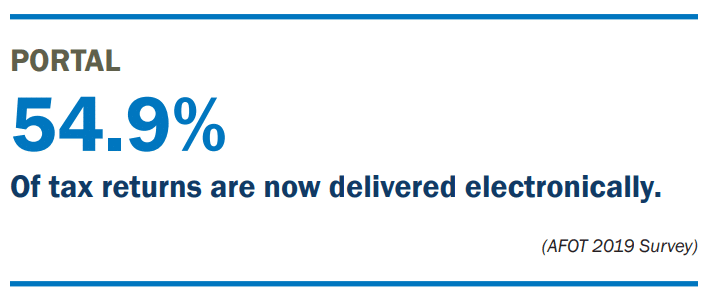
Integration
This allows users to access the functionality of document management software from within other software programs, and to easily use other applications from within Doc.It. The combining of subroutines, software modules, or full programs with other software components in order to develop an application or enhance the functionality of an existing one. For example, Doc.It easily shares information with scanners, engagement software, tax applications, eSignature technology, email, and other applications.
Lifecycle
Every business document has a lifecycle, from initial creation through active use and eventual archiving or destruction. A DMS helps automate the lifecycle of a document, particularly enabling the movement of records to a digital records management program for retention and eventual purging.
Mobile Access
Secure access to a document repository for defined users through any web-connected mobile devices. On-Premise installation: Document management software which is deployed on in-house servers, managed directly by the firm or by a 3rd party IT management company.
PBC
An acronym for ‘prepared by client” or ‘provided by client’, a PBC is a list of requested items an accounting firm will need in order to prepare taxes, perform an audit, or do other projects for the client. Historically this may have taken form in a letter or fax. In a digital DMS environment, the accountant posts a list of required documents in a secure client-sharing site. The client can easily upload required documents so the firm can complete the project.
PDF/A
An ISO-standardized version of the Portable Document Format (PDF) specialized for use in the archiving and long-term preservation of electronic documents. PDF/A differs from PDF by prohibiting features ill-suited to long-term archiving, such as font linking (as opposed to font embedding) and encryption.
Portal (aka Secure Client Portal)
A client portal is a collection of digital files, reports and information, accessible over the Internet through a web browser. Portal software that allows you to interact with your clients, share files, discuss, chat, plan, organize and manage tasks and events in a private online environment. The client portal in Doc.It allows accounting firms to customize the site with their own brand name, so clients can log in directly from
the firm website to the portal. Features of particular value for accountants include Prepared by Client (PBC) lists and integration with DocuSign eSignature software.
OCR (Optical Character Recognition)
Optical character recognition or optical character reader is the mechanical or electronic conversion of images of typed or printed text into machine-encoded text, whether from a scanned document, a photo of a document, a scene-photo or from subtitle text superimposed on an image. An OCR program can convert the characters on the page into a digital text document. The content is then indexed to render it searchable
by users of the DMS system.
Policy Manager
In compliance with record-keeping regulations, many firms adopt a retention policy to govern the processes for archiving, retention, and later purging of stored documents. In Doc.It, the Policy Manager allows configuration of the firm’s file naming and location policies for documents as they are prepared for storage. When it is time to purge documents, the Doc.It Suite creates a report of documents past their retention periods, based on the policy applied to that type of document. The Doc.It Policy Manager further insulates the firm from litigation and the risks of eDiscovery. Firms control how documents will be named based on document type (e.g. W2 or T4 may be named with different conventions than a rental income statement, for instance). (See Retention Policy).
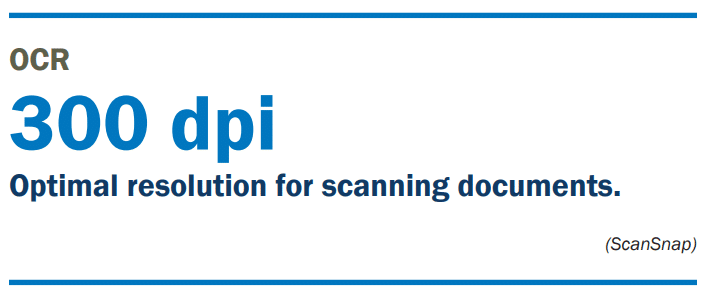
Remote Access
The ability to access a DMS on an office network server or a hosting provider, from a remote location, such as a coffee shop, client office, or hotel.
Retention Policy
A retention policy supports decision-making accounting firms about disposition of documents and files that are no longer active, but must be retained for some period due to legal and regulatory compliance requirements. Records may consist of paper files, electronic documents, correspondence (including letters, faxes and emails) and data used in business applications and databases. A clear retention policy helps establish a uniform rule across the organization as to how long something should be retained.
Organizations should establish these policies to mitigate the risks associated with the vast number of federal, state and local laws and regulations in effect; employee, customer, vendor and supplier disputes; or for audits from federal, state, and/or local tax authorities. A record retention policy not only assists the organization with which records to retain, it also serves as a guide for when certain records should be destroyed due to physical or electronic space constraints.
RPA (Robotic Process Automation)
Robotic Process Automation (RPA) is a technology which automates structured business processes. RPA works just like a human user, interacting with the user interfaces of your existing applications and carrying out structured processes automatically.
RPA is effective in automating accounting tasks - high-transaction, repeatable, structured, rules-based processes. Doc.It users experience RPA in the AutoFiling and Advanced Forms Recognition (AFR) capabilities, where the application makes smart decisions about categorizing, naming, and organizing documents just as a human would, only faster and with fewer errors. RPA conducts lower value, time-consuming tasks, freeing up accounting staff to focus their efforts more productively.
Scalability
The ability of a software product to be effective when starting small, and to expand to support more business as needs grow without sacrificing the effectiveness of the system. In databases, scalability allows a system to hold increasing amounts of data without sacrificing performance, effectively scaling up with your business.
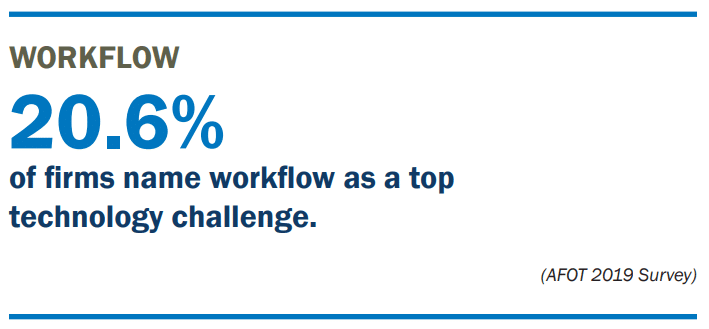
Scanning
Document scanning is a process that converts a paper document into a digital file, whether an image, PDF, or other file type.
- Imaging creates an image, or picture of a document, without searchable text
- Optical Character Recognition (OCR) can scan, recognize and store machine-readable text. This preferred method of scanning renders the digital document searchable and editable.
Scanner machines, copy machines and mobile phone apps are all useable for document scanning.
Structured Data
Structured data is data that is divided into standardized pieces that are identifiable and accessible by both humans and computers. Structured data includes fields that store length-delineated data, for example, phone numbers, Social Security numbers, or postal codes. In accounting, structured data is commonlyrepresented by tax forms, compliance documents, Excel spreadsheets, Access database files, invoices, general ledgers, etc. Structured data represents about 20% of all data created. See Unstructured Data.
Tasks
An action, typically within a sequence of actions or “workflows”, taken on documents or items that are related to a business process. Examples of tasks might be “send client engagement letter”, “approve Invoice,” or “distribute quarterly reports”.
Taxonomy
This refers to the structure you give your documents, or more specifically, how you classify them, perhaps by client name, business type, or project, such as tax, audit, or business consulting. In a DMS it’s easy to create a system for managing your records that reflects both best practices and your personal preferences.
Unstructured Data
Unstructured data includes content such as video, email, images, podcasts, social media posts and PDFs. In short, unstructured data has no internal identifier to let search functions recognize it. It’s estimated that unstructured data makes up approximately 80 percent of all data generated.
Version Control (Revision Control)
A key component of a DMS is maintaining the integrity of the original document. If changes are permitted, or if users are collaborating on content development, versioning saves each iteration along the way, allowing users to revert or compare to a previous version of a document, and to identify which user made a particular change.
Work Binder
In Doc.It, work binders provide a central location for a project or engagement where all documents are organized for preparation and review of work, and contain documents in their native file formats. Doc.It Work Binders are organized in a logical template-driven, firm-defined folder structure. With Doc.It Suite at work for your firm, productivity increases because documents are always named and filed correctly and instantly available, which eliminates any time wasted searching.
Workflow
Workflow systems help firms establish and follow consistent management of documents and tasks on a day-to-day basis. Workflow systems are designed to allow teams the ability to collaborate, share, and process documents with ease. From the time a document enters your firm, any number of people may be involved in various tasks: reviewing, scheduling, auditing, setting meetings, communicating with the client, or filing tax returns or business filings. Tasks may be assigned to individuals, thereby creating a work management tool. Workflow allows firms to design the desired workflow for any type of project or document, and once set up in the system, staff can track status and organize their daily activities based on assignments and deadlines captured in the workflow. Doc.It Suite offers workflow management integrated within the DMS.





